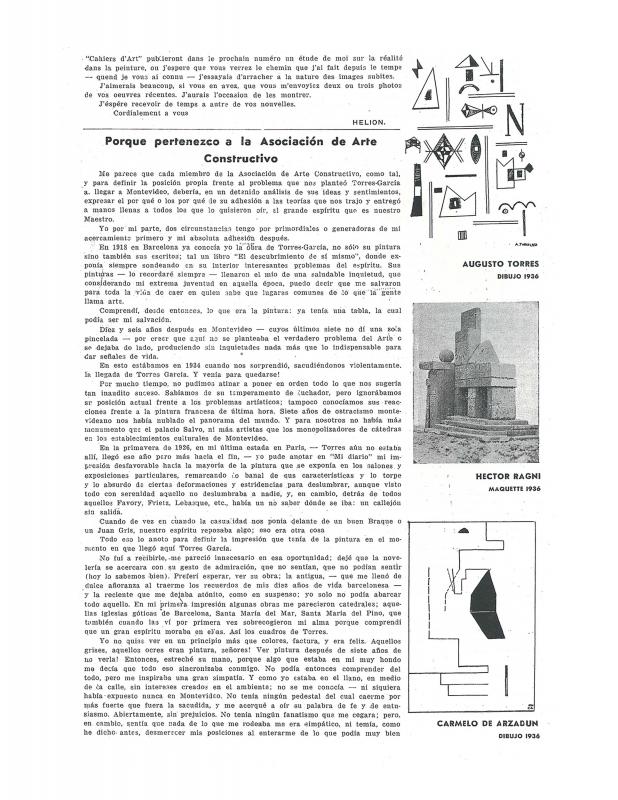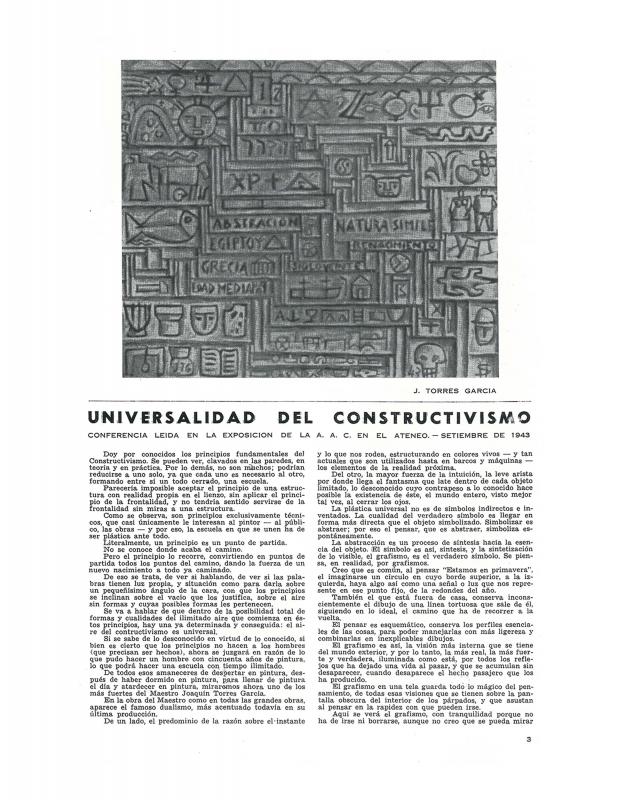The article “El Hombre, una incógnita” [Man, an Unknown] quotes excerpts from L’Homme, cet inconnu, the book by the medical doctor and researcher Alexis Carrel (1873–1944) that was originally published in French in 1934. The fact that Joaquín Torres-García (1874–1949) had read this book only three years later suggests that someone else in his circle might have read it first, perhaps Dr. Esther de Cáceres (1903–71), a politically active Catholic who was very close to the AAC (Asociación de Arte Constructivo). The excerpts taken from the book for the article that appeared in issue Number 5 of Círculo y Cuadrado magazine discuss the need to distance oneself from positivism in our modern civilization and form groups inspired by mystical restrictions, governed by ethical rules and monastic behaviors based on medieval tradition. Carrel seeks to reconcile this point of view with his own scientific practice as a distinguished professional: he was awarded the Nobel Prize in Physiology or Medicine in 1912 for his contribution to biology and surgical techniques. On the other hand, his mystical views (he converted after witnessing the Miracle of Lourdes in 1902) made him sympathetic to both conservative Catholicism and teleology, as well as to a network of brotherhoods and secret societies that led him to collaborate with the pro-Nazi Vichy regime during the German occupation of France. However, it was his clearly anti-modern discourse and his insistence that people could find “salvation” in groups of individuals with similar spiritual convictions that prompted Torres-García to say that “his ideas agree with the ones we have expressed in this magazine.” The two men also shared common philosophical views regarding anti-positivism, and an almost Bergsonian concept of “the living” as an inseparable part of matter and spirit.
[As complementary reading, see the ICAA digital archive for the following articles published in Cercle et Carré (Circle and Square): by Joaquín Torres-García “Aquí, en Montevideo” (doc. no. 1263116), “El plano en el que deseamos situarnos” (doc. no. 1263054), “Reflexiones” (doc. no. 1263191), “La presente revista” (doc. no. 1262991), and “El arte naturalista y el arte geométrico” (doc. no. 1263101); by Guido Castillo “El constructivismo. Muerte y nacimiento de un momento histórico” (doc. no. 1263176); by Edgar Varèse “Nacionalismo y Folklore” (doc. no. 1263070); by Carmelo de Arzadun “Necesidad de agruparse para la formación de un medio artístico” (doc. no. 1263023); by San J. Luis Vicente “Nosotros y nuestro ambiente” (doc. no. 1263146); by Héctor Ragni “Nuestro arte constructivo y las teorías cubistas” (doc. no. 1263131), and “De qué pertenezco a la asociación de arte constructivo” (doc. no. 1263007); and by Francisco Lanza Muñoz “Universalidad del constructivismo” (doc. no. 1263161)].












